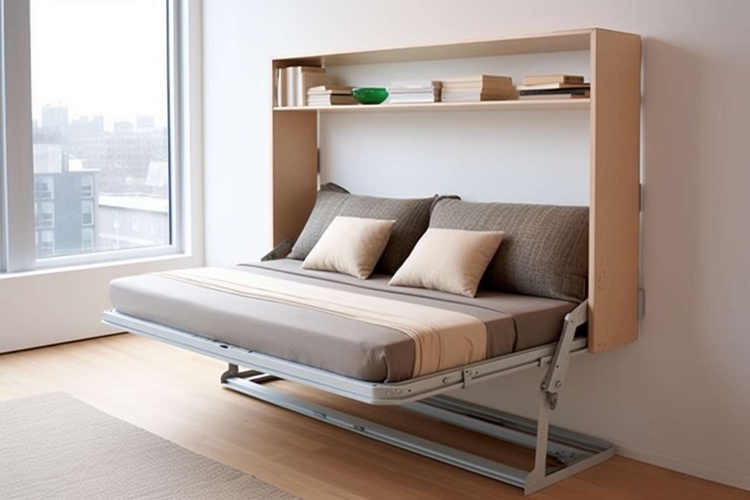Title: Micro-Apartments: The Future of Urban Living?
Introduction: In the heart of bustling metropolises, a new trend is reshaping the real estate landscape: micro-apartments. These compact living spaces, typically under 400 square feet, are gaining traction as urban populations soar and housing affordability becomes a pressing concern. With 68% of the world's population projected to live in urban areas by 2050, according to the UN, micro-apartments offer a potential solution to the growing demand for affordable city living.

Addressing Urban Housing Challenges
The proliferation of micro-apartments is largely driven by the urgent need to address housing shortages in major cities. As urban populations continue to grow, traditional housing models struggle to keep pace with demand, leading to skyrocketing prices and pushing many residents to the outskirts. Micro-apartments offer a pragmatic solution by increasing housing density without requiring extensive urban sprawl. They allow developers to create more units within existing building footprints, potentially easing the strain on overstretched housing markets.
The Economics of Small-Scale Living
From an investment perspective, micro-apartments present an intriguing proposition. While the per-square-foot cost of these units tends to be higher than traditional apartments, their overall lower price point makes them accessible to a broader range of buyers and renters. This accessibility can translate to higher occupancy rates and potentially more stable returns for investors. Additionally, the trend towards smaller households in many developed countries aligns well with the micro-apartment model, suggesting a potentially sustainable demand for these compact living spaces.
Design Innovations in Limited Spaces
The success of micro-apartments hinges on innovative design solutions that make small spaces not just livable, but desirable. Architects and interior designers are pushing the boundaries of spatial efficiency, incorporating features like:
-
Murphy beds that fold into walls
-
Expandable tables and workspaces
-
Sliding partitions for flexible room configurations
-
Vertical storage solutions that maximize wall space
-
Smart home technology for enhanced functionality
These design elements aim to create a sense of spaciousness and versatility within minimal square footage, challenging traditional notions of what constitutes a comfortable living space.
The Social Implications of Micro-Living
The rise of micro-apartments is not without controversy. Critics argue that these small living spaces may lead to social isolation and negatively impact quality of life. There are concerns about the long-term effects of living in such confined spaces, particularly on mental health and well-being. Proponents, however, counter that micro-apartments often come with shared amenities like communal lounges, kitchens, and workspaces, which can foster a sense of community among residents. The trade-off between private space and urban accessibility is at the heart of the micro-apartment debate.
Regulatory Hurdles and Zoning Challenges
As micro-apartments gain traction, they face regulatory challenges in many cities. Zoning laws and building codes often have minimum size requirements for residential units, which can impede the development of micro-apartment projects. Some cities, recognizing the potential benefits of these compact dwellings, are reviewing and adjusting their regulations to accommodate this new housing typology. However, the process is often slow and contentious, with concerns about maintaining living standards and preventing overcrowding.
The Environmental Angle
From an environmental perspective, micro-apartments offer several potential benefits. Their smaller footprint typically translates to reduced energy consumption for heating, cooling, and lighting. The high-density nature of micro-apartment buildings can also support more efficient public transportation networks and reduce urban sprawl. Additionally, the limited space naturally encourages residents to consume and accumulate less, potentially leading to a more sustainable lifestyle. However, the environmental impact of constructing and maintaining these high-density buildings must also be considered in the overall sustainability equation.
Market Outlook and Future Trends
The future of micro-apartments remains a topic of debate among real estate professionals. While some view them as a temporary solution to housing shortages, others see them as a long-term shift in urban living preferences. The COVID-19 pandemic has added another layer of complexity to this outlook, with increased remote work potentially reducing the appeal of urban living for some. However, as cities continue to attract talent and offer unparalleled cultural and economic opportunities, the demand for affordable urban housing solutions is likely to persist.
Conclusion
Micro-apartments represent a bold reimagining of urban living spaces, offering a potential solution to the pressing challenges of housing affordability and urban density. As this trend continues to evolve, it will likely reshape not only the physical landscape of our cities but also our conceptions of home and community. While not without challenges, micro-apartments may well play a significant role in the future of urban real estate, offering a compromise between location, affordability, and sustainability in an increasingly urbanized world.




